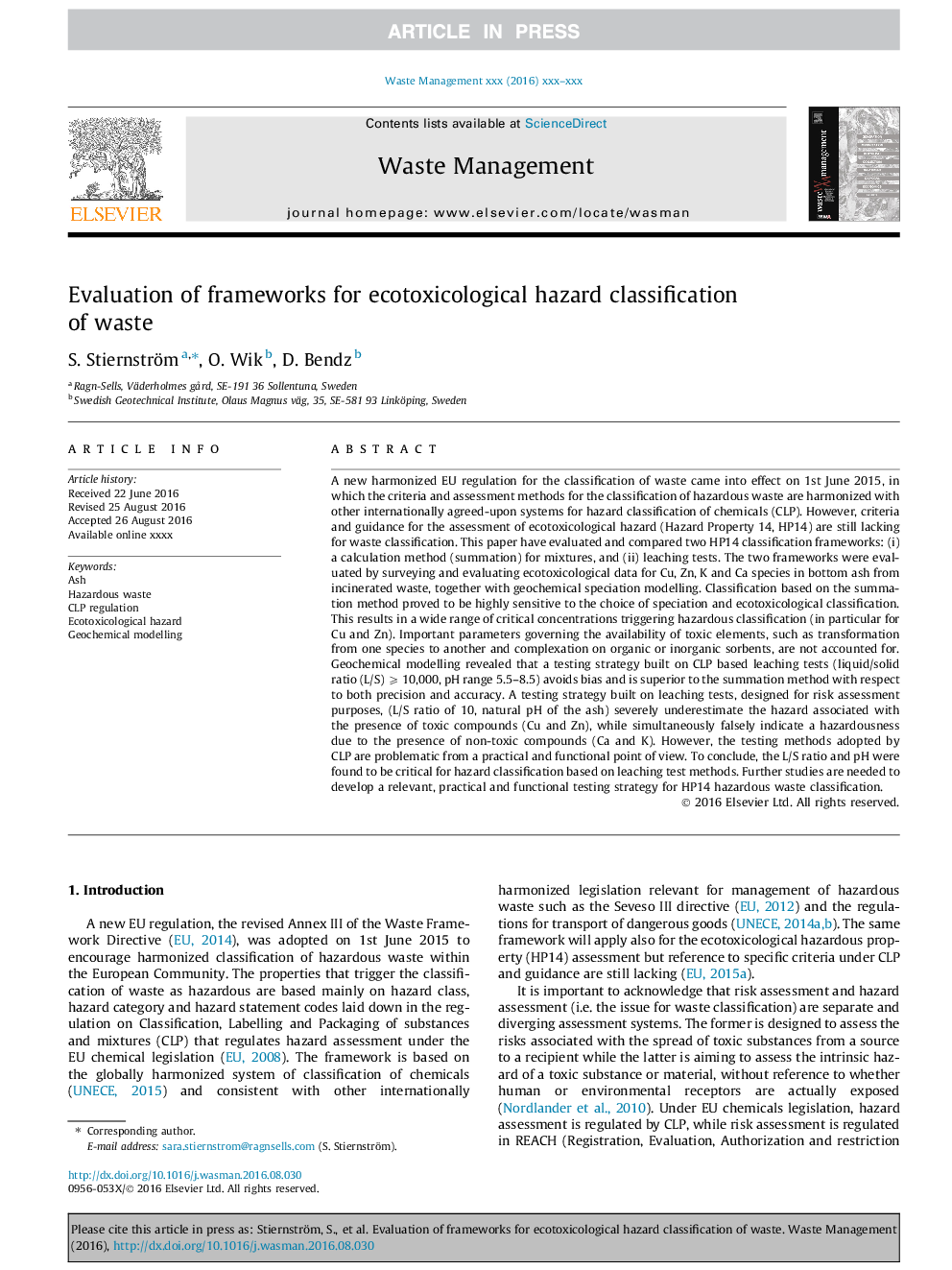| کد مقاله | کد نشریه | سال انتشار | مقاله انگلیسی | نسخه تمام متن |
|---|---|---|---|---|
| 5757070 | 1622628 | 2016 | 11 صفحه PDF | دانلود رایگان |
عنوان انگلیسی مقاله ISI
Evaluation of frameworks for ecotoxicological hazard classification of waste
ترجمه فارسی عنوان
ارزیابی چارچوب طبقه بندی خطر زیست سم شناسی زباله
دانلود مقاله + سفارش ترجمه
دانلود مقاله ISI انگلیسی
رایگان برای ایرانیان
کلمات کلیدی
موضوعات مرتبط
مهندسی و علوم پایه
علوم زمین و سیارات
مهندسی ژئوتکنیک و زمین شناسی مهندسی
چکیده انگلیسی
A new harmonized EU regulation for the classification of waste came into effect on 1st June 2015, in which the criteria and assessment methods for the classification of hazardous waste are harmonized with other internationally agreed-upon systems for hazard classification of chemicals (CLP). However, criteria and guidance for the assessment of ecotoxicological hazard (Hazard Property 14, HP14) are still lacking for waste classification. This paper have evaluated and compared two HP14 classification frameworks: (i) a calculation method (summation) for mixtures, and (ii) leaching tests. The two frameworks were evaluated by surveying and evaluating ecotoxicological data for Cu, Zn, K and Ca species in bottom ash from incinerated waste, together with geochemical speciation modelling. Classification based on the summation method proved to be highly sensitive to the choice of speciation and ecotoxicological classification. This results in a wide range of critical concentrations triggering hazardous classification (in particular for Cu and Zn). Important parameters governing the availability of toxic elements, such as transformation from one species to another and complexation on organic or inorganic sorbents, are not accounted for. Geochemical modelling revealed that a testing strategy built on CLP based leaching tests (liquid/solid ratio (L/S) ⩾ 10,000, pH range 5.5-8.5) avoids bias and is superior to the summation method with respect to both precision and accuracy. A testing strategy built on leaching tests, designed for risk assessment purposes, (L/S ratio of 10, natural pH of the ash) severely underestimate the hazard associated with the presence of toxic compounds (Cu and Zn), while simultaneously falsely indicate a hazardousness due to the presence of non-toxic compounds (Ca and K). However, the testing methods adopted by CLP are problematic from a practical and functional point of view. To conclude, the L/S ratio and pH were found to be critical for hazard classification based on leaching test methods. Further studies are needed to develop a relevant, practical and functional testing strategy for HP14 hazardous waste classification.
ناشر
Database: Elsevier - ScienceDirect (ساینس دایرکت)
Journal: Waste Management - Volume 58, December 2016, Pages 14-24
Journal: Waste Management - Volume 58, December 2016, Pages 14-24
نویسندگان
S. Stiernström, O. Wik, D. Bendz,
